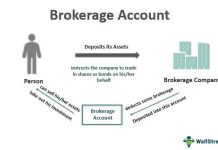Optimizing Employee Benefits: Average Cost and Comprehensive Analysis
Welcome to our comprehensive guide on the average cost of employee benefits. In this article, we will delve into the intricacies of employee benefits and provide you with valuable insights to help you make informed decisions for your organization. Understanding the average cost of employee benefits is crucial for budgeting purposes and ensuring employee satisfaction. Let’s explore this topic in detail.
What are Employee Benefits?
Employee benefits are additional perks and incentives provided by employers to their employees, alongside their regular wages or salaries. These benefits go beyond financial compensation and aim to enhance the overall well-being and job satisfaction of employees. They can include healthcare plans, retirement savings programs, paid time off, flexible work schedules, and various other offerings.
Why are Employee Benefits Important?
Employee benefits play a vital role in attracting and retaining top talent. They contribute to employee satisfaction, engagement, and overall productivity. By offering competitive benefits packages, employers can create a positive work environment and foster loyalty among their workforce. Additionally, employee benefits can have a positive impact on the employer’s brand image and reputation.
Average Cost of Employee Benefits
The average cost of employee benefits can vary based on several factors, including the size of the organization, industry, location, and the specific benefits offered. It is important to note that the cost of benefits is typically a percentage of an employee’s salary or wages. On average, employee benefits can account for around 30% of an employee’s total compensation package.
However, it is crucial to analyze the specific benefits you offer and their associated costs to determine the accurate average cost for your organization. Let’s explore some of the key factors that contribute to the cost of employee benefits.
Healthcare Benefits
Healthcare benefits, such as medical, dental, and vision insurance, are among the most common offerings provided by employers. The cost of healthcare benefits can vary based on factors such as the number of employees covered, the level of coverage, and the geographic location. Employers typically share the cost with employees, with the employer covering a significant portion.
Retirement Benefits
Retirement benefits, such as 401(k) plans or pension schemes, are aimed at helping employees save for their post-employment years. The cost of retirement benefits can vary based on factors such as the employer’s contribution match percentage, investment options, and administrative fees. Employers often contribute a certain percentage of an employee’s salary to their retirement savings.
Paid Time Off
Paid time off (PTO) includes vacation days, sick leave, and holidays. The cost of PTO depends on factors such as the number of days provided, the average salary of employees, and the number of employees utilizing PTO. Employers need to account for the salary costs during an employee’s absence and ensure adequate coverage to maintain productivity.
Additional Benefits
Aside from healthcare, retirement, and PTO, employers may offer additional benefits such as flexible work arrangements, wellness programs, childcare assistance, and educational reimbursements. The cost of these benefits can vary widely depending on their nature and extent. Employers need to consider the value these benefits bring to their employees and their overall cost-effectiveness.
Strategies to Optimize Employee Benefits
Now that we have discussed the average cost of employee benefits, let’s explore some strategies to optimize your benefits program and ensure you are providing the best value to your employees.
Conduct a Comprehensive Benefits Analysis
Start by conducting a thorough analysis of your current benefits program. Evaluate the utilization rates, employee feedback, and overall cost-effectiveness of each benefit offering. This analysis will help you identify areas for improvement and make informed decisions regarding benefit modifications.
Tailor Benefits to Employee Needs
Every organization has a unique workforce with different needs and preferences. Consider conducting surveys or focus groups to understand what benefits are most valued by your employees. Tailoring your benefits program to their needs will enhance their satisfaction and increase the perceived value of the offerings.
Communicate the Value of Benefits
Employees often underestimate the value of the benefits provided by their employers. Communicate the benefits, their associated costs, and the impact they have on the employees’ overall compensation package. This will help employees fully appreciate the value they receive and increase their engagement.
Regularly Review and Update Benefits
The needs and expectations of employees evolve. It is essential to review and update your benefits program periodically to ensure it remains competitive and aligned with industry standards. Stay informed about emerging benefits trends and consider incorporating new offerings that align with your employees’ needs.

Employee benefits are a crucial aspect of any organization’s compensation package. Understanding the average cost of employee benefits is essential for effective budgeting and ensuring employee satisfaction. By providing comprehensive benefits and optimizing their value, employers can attract and retain top talent, enhance productivity, and foster a positive work environment. Remember to regularly assess and update your benefits program to meet the evolving needs of your workforce. Invest in your employees, and they will invest in your organization’s success.
Frequently Asked Questions – Average Cost of Employee Benefits
1. What are employee benefits?
Employee benefits are additional perks or rewards provided by employers to their employees, such as health insurance, retirement plans, paid time off, and other non-wage compensation.
2. Why is it important to consider the average cost of employee benefits?
Understanding the average cost of employee benefits helps employers budget and plan for these expenses, ensuring they can attract and retain talented employees while maintaining financial stability.
3. What factors contribute to the average cost of employee benefits?
The average cost of employee benefits is influenced by various factors, including the type of benefits offered, the size of the workforce, the industry, geographical location, and the overall health of the employees.
4. How can I calculate the average cost of employee benefits for my company?
To calculate the average cost of employee benefits, you would need to consider the total expenses incurred on benefits (including insurance premiums, retirement contributions, etc.) divided by the number of employees.
5. Are there any legal requirements for providing employee benefits?
While there are no federal laws mandating employers to provide employee benefits, certain benefits like health insurance may be required under the Affordable Care Act (ACA) for companies of a certain size.
6. What are some common types of employee benefits?
Common types of employee benefits include health insurance, dental and vision coverage, retirement plans (401(k)), paid time off (vacation, sick leave), life insurance, disability insurance, and flexible spending accounts (FSAs).
7. How do employee benefits affect employee satisfaction and retention?
Employee benefits play a crucial role in employee satisfaction and retention. Offering competitive benefits can attract top talent, improve job satisfaction, and increase loyalty towards the company.
8. How can an employer reduce the average cost of employee benefits?
Employers can reduce the average cost of employee benefits by implementing cost-sharing strategies, negotiating better rates with insurance providers, promoting wellness programs, and offering voluntary benefits that employees can choose to pay for.
9. Are there any tax implications associated with employee benefits?
Employee benefits can have tax implications for both employers and employees. Some benefits may be tax-deductible for employers, while others may be subject to taxation for employees.
10. How can I benchmark my company’s average cost of employee benefits against industry standards?
You can benchmark your company’s average cost of employee benefits by researching industry reports, consulting with HR professionals or benefits consultants, and comparing your benefits package with similar companies in your industry.




